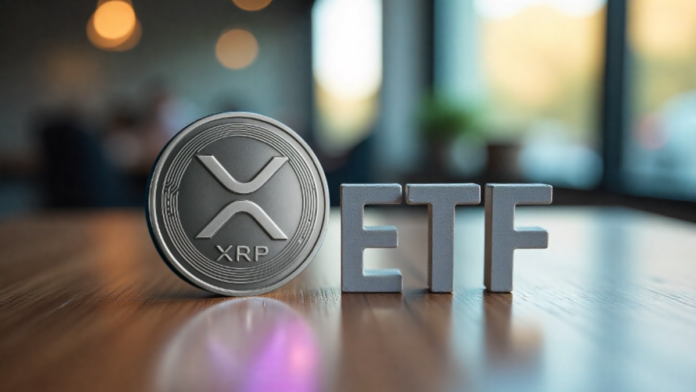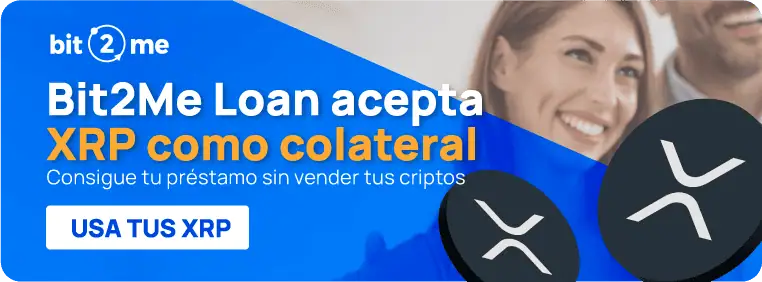
The potential approval of an XRP spot ETF is generating expectations that transcend the crypto market.
Beyond regulated access for funds and businesses, the arrival of this financial instrument could catalyze a profound transformation in the way international payments are made, global payrolls are managed, and money is sent abroad.
XRP, Ripple's native asset, was designed from the beginning as a technical solution for Fast, secure, and low-cost cross-border transfersIts focus on liquidity infrastructure differentiates it from other cryptocurrencies focused on stores of value or smart contracts.
Therefore, analysts anticipate that an XRP spot ETF could legitimize its institutional use, accelerate its adoption in traditional financial systems, and position it as an operational bridge between fiat and cryptocurrencies.
XRP as a payment infrastructure: technical design and functional purpose
XRP was conceived as a tool to solve the inefficiencies of the global financial system, not as a speculative asset. Ripple specifically designed it to facilitate international payments with speed, security, and minimal costs. Unlike traditional networks like SWIFT, which rely on intermediaries and fragmented processes, XRP operates on a decentralized network that settles transactions in seconds, without the need for pre-funding or exposure to multiple currencies.
The technical core of this efficiency is the XRP Ledger, which uses a federated consensus mechanism instead of mining. This allows for high scalability, with the capacity to process thousands of transactions per second, and a predictability in costs that makes it ideal for business payments. In addition, its energy-efficient architecture positions it as a sustainable solution for high-volume operations.
XRP acts as a bridge asset between fiat currencies, enabling rapid conversions without the need to maintain accounts in multiple currencies. This functionality has been adopted by banks, fintechs, and remittance platforms looking to optimize their capital flows. In contexts such as B2B payments or international payrollsWhere speed and certainty are critical, XRP offers a robust technical infrastructure that can be easily integrated into existing systems.
The spot ETF as a catalyst for XRP's legitimacy and institutional adoption
The approval of an XRP spot ETF would represent a significant step forward in the institutionalization of digital assets. Unlike futures-based ETFs, a spot ETF involves the direct purchase of the underlying asset, which requires high standards of custody, regulatory compliance, and transparency. For XRP, this would mean a formal validation which could dispel years of regulatory uncertainty and open the door to mass adoption by financial institutions.
Send money with XRP, fast and secureJP Morgan analysts, in a report published last April, estimated that XRP and Solana ETFs could attract billions in institutional capitalThis forecast not only reflects the growing interest in assets with operating profit, but also the expectation that these instruments will facilitate the integration of cryptocurrencies into traditional financial flows.
A spot ETF would allow banks, funds, and corporations to access XRP without having to manage private keys or face the technical challenges of custody. This would facilitate its use in operational solutions such as international payments, interbank clearing, and global payrolls. Furthermore, the transparency required by these products could become a standard for other XRP applications, incentivizing regulators to establish clearer and more functional frameworks.
Potential integration into payroll, B2B payments and remittances
The institutional accessibility offered by a spot ETF could accelerate the adoption of XRP in specific applications such as payroll payments, B2B transfers and remittances.
Companies with global operations face constant challenges in managing international payments: currency conversions, settlement times, bank fees, and regulatory compliance. However, XRP, with its ability to act as a bridge between fiat currencies, could simplify these processes, enabling near-instant payments with traceability and reduced costs.
In the B2B environment, where transfers often involve large amounts and security requirements, XRP offers an infrastructure that can meet these demands. settlement speed, low cost and interoperability capabilities making it attractive for sectors such as logistics, international trade, and digital services. Companies could also use XRP to optimize their capital flows without relying on traditional banking intermediaries.
Finally, remittance platforms could also benefit from this development. In regions with limited access to banking services, XRP could facilitate cross-border transfers without costly intermediaries.
However, although these applications still depend on regulatory developments, the possible arrival of a spot ETF could be the catalyst that accelerates their implementation.
XRP as a financial bridge between fiat and crypto currencies
The true transformation that an XRP spot ETF could bring lies in its ability to connect two financial worlds that have so far operated in parallel: fiat and crypto. In an environment where interoperability is increasingly important, XRP is positioned as a technical solution that can facilitate the transition between traditional systems and decentralized architectures.
Its design as a liquidity asset allows XRP to function as a neutral intermediary between national currencies and digital assets, facilitating fast, secure, and traceable conversions. This functionality is especially valuable in contexts where companies need to move capital between jurisdictions with different regulatory frameworks and local currencies. XRP can act as a catalyst for efficiency, reducing friction and increasing transparency.
Therefore, analysts predict that the approval of a spot ETF would not only increase the liquidity of this cryptocurrency, but also would incentivize the development of XRP-based solutions for payments, compensations and transfers.
As JP Morgan analysts highlighted, institutional interest in operating-income ETFs could channel billions into assets like XRP, cementing its role as a global financial bridge. Thus, in a world of rapidly advancing digitalization, XRP could become the link that connects legacy systems with new forms of digital money.
Trade XRP without banks or borders


